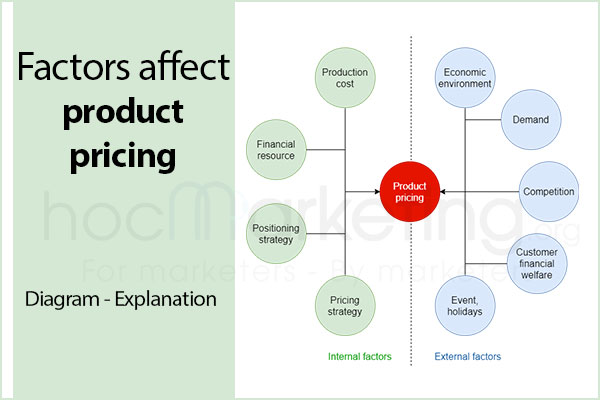
What is a Marketing Plan? Steps to create a marketing plan for your business

Learn how to create a successful marketing plan for your business with these easy steps. Define your objectives, target audience, and unique selling proposition. Set a budget, determine your marketing mix, and create an action plan. Put your plan into action, monitor and measure its success, and make adjustments as needed.
In order to achieve success and growth in your business, having a solid marketing plan is essential. A marketing plan is a comprehensive document that outlines your business objectives, target audience, competition, unique selling proposition, marketing budget, marketing mix, action plan, and monitoring and measuring strategies. By creating a well-defined marketing plan, you can effectively promote your products or services, attract the right customers, and ultimately achieve your business goals. In this blog post, we will discuss the importance of a marketing plan and provide step-by-step guidance on how to create one for your business.
1. What is a Marketing Plan?
A marketing plan is a comprehensive document that outlines the strategies and tactics a business will use to promote its products or services to its target audience. It serves as a roadmap that guides the company's marketing activities and helps them achieve specific business goals. A well-crafted marketing plan takes into consideration various factors such as the current market trends, customer preferences, and the competition and uses this information to develop effective marketing strategies that resonate with the target audience. In the following sections, we will discuss the importance of a marketing plan and the steps involved in creating a successful one.
2. Importance of a Marketing Plan
A marketing plan is an essential tool for any business looking to grow and succeed in today's competitive market. It serves as a roadmap for businesses to follow and outlines the strategies and tactics they need to achieve their marketing objectives. In this section, we will explore the importance of a marketing plan and why every business, regardless of its size or industry, needs to have one.
A marketing plan helps businesses to focus their efforts and resources on the most effective marketing strategies. Without a plan in place, businesses can end up wasting time and money on marketing activities that don't yield results. A marketing plan ensures that every dollar spent on marketing is maximized and that efforts are targeted towards the most promising opportunities.
Another critical aspect of a marketing plan is that it provides a framework for measuring success. By setting specific goals and objectives, businesses can track their progress and analyze the effectiveness of their marketing campaigns. This allows them to make data-driven decisions and adjust their strategies accordingly to achieve better results.
Furthermore, a marketing plan helps businesses to stay competitive in their industry. By analyzing their competition and identifying their strengths and weaknesses, businesses can develop strategies to differentiate themselves and stand out from the crowd. This is especially important in today's fast-paced market, where consumers have numerous options and are constantly bombarded with marketing messages.
In summary, a marketing plan is crucial for any business that wants to succeed in today's market. It provides a roadmap for businesses to follow, ensures that resources are maximized, helps businesses to measure success, and keeps them competitive in their industry. In the following sections, we will explore the steps involved in creating a marketing plan in more detail.
3. Steps to Create a Marketing Plan
When creating a marketing plan for your business, there are several steps that need to be taken in order to ensure success. These steps include defining your business objectives, identifying your target audience, analyzing your competition, developing your unique selling proposition, setting your marketing budget, determining your marketing mix, and creating an action plan. Each of these steps is crucial in creating a comprehensive and effective marketing plan that will help you reach your business goals.
Defining your business objectives is the first step in creating a marketing plan. It is important to identify what you hope to achieve through your marketing efforts, whether it be increased sales, improved brand awareness, or something else entirely. Once you have a clear understanding of your objectives, you can begin to develop a plan to achieve them.
Identifying your target audience is also crucial in creating an effective marketing plan. You need to know who your ideal customer is, what their needs are, and how you can best reach them. This will help you tailor your marketing efforts to the right audience and increase the chances of success.
Analyzing your competition is another important step in creating a marketing plan. You need to know who your competitors are, what they are doing, and how you can differentiate yourself from them. This will help you develop a unique selling proposition that will set you apart from the competition.
Setting your marketing budget is also crucial in creating a marketing plan. You need to know how much you can realistically spend on marketing and how you can best allocate those funds to achieve your objectives.
Determining your marketing mix is also important. This involves deciding which marketing channels you will use to reach your target audience, such as social media, email marketing, or traditional advertising.
Finally, creating an action plan is crucial in executing your marketing plan. This involves setting specific goals, timelines, and tasks that need to be accomplished in order to achieve your objectives.
By following these steps and creating a comprehensive marketing plan, you can increase the chances of success for your business and achieve your marketing objectives.
Define your Business Objectives
Defining your business objectives is the first step in creating a marketing plan. Your business objectives should be specific, measurable, achievable, relevant, and time-bound (SMART). You need to have a clear understanding of what you want to achieve with your marketing efforts. This will help you develop a strategy that is aligned with your goals and objectives.
Your business objectives should be based on your overall business goals. For example, if your goal is to increase revenue by 20%, your marketing objectives should focus on generating more leads, increasing conversions, and retaining customers. You should also consider your target audience and their needs and preferences when defining your objectives.
Once you have defined your business objectives, you can move on to the next step of creating a marketing plan, which is identifying your target audience. This will help you create a marketing strategy that is tailored to the needs and preferences of your target audience.
Identify your Target Audience
Identifying your target audience is a crucial step in creating a successful marketing plan. Your target audience is the group of people who are most likely to be interested in your product or service. This group may include customers who have already purchased from you, as well as potential customers who have not yet discovered your business. By understanding who your target audience is and what their needs and wants are, you can tailor your marketing efforts to effectively reach and engage with them.
To identify your target audience, start by analyzing the demographics of your current customer base. Look at factors such as age, gender, income level, occupation, and geographic location. This information can help you create a profile of your ideal customer, or buyer persona. You can also conduct market research, such as surveys or focus groups, to gather more information about your target audience's preferences and behaviors.
Once you have a clear understanding of who your target audience is, you can begin to develop marketing strategies that will resonate with them. This may include creating content that speaks directly to their interests and concerns, using social media platforms that they frequent, or advertising in publications or websites that they are likely to visit. By tailoring your marketing efforts to your target audience, you can increase the effectiveness of your marketing plan and ultimately drive more sales for your business.
Analyze your Competition
Analyzing your competition is a critical step in creating a successful marketing plan for your business. It involves identifying your competitors, evaluating their strengths and weaknesses, and determining how you can differentiate your products or services from theirs. By conducting a thorough analysis of your competition, you will gain valuable insights into the market and position your business for success.
One aspect of analyzing your competition is identifying who they are. This involves researching businesses that offer similar products or services to yours. You can start by conducting a simple online search or by using industry directories to identify potential competitors. Once you have a list of competitors, you can start evaluating their strengths and weaknesses.
To evaluate your competitors, you should consider factors such as their pricing strategies, marketing tactics, and customer service. You can also look at their product offerings, distribution channels, and target audience. By understanding your competitors' strengths and weaknesses, you can identify areas where your business can differentiate itself and gain a competitive advantage.
Another important aspect of analyzing your competition is determining how you can differentiate your business from theirs. This involves identifying your unique selling proposition (USP) and developing a strategy to communicate it to your target audience. Your USP should be a clear and compelling message that sets your business apart from the competition and resonates with your target audience.
In summary, analyzing your competition is a crucial step in creating a successful marketing plan. By identifying your competitors, evaluating their strengths and weaknesses, and developing a unique selling proposition, you can position your business for success in the market.
Develop your Unique Selling Proposition
Developing your Unique Selling Proposition (USP) is a crucial step in creating a successful marketing plan. Your USP is what sets you apart from your competitors and helps you stand out in the crowded marketplace. It is a statement that defines your business and communicates the unique benefits of your products or services to your target audience.
To develop your USP, you need to identify what makes your business different from others in your industry. You can do this by analyzing your strengths, weaknesses, opportunities, and threats. You can also conduct market research to understand your customers' needs, preferences, and pain points.
Once you have identified your unique selling points, you need to craft a statement that communicates your value proposition to your target audience. Your USP should be clear, concise, and memorable. It should highlight the benefits of your products or services and explain why customers should choose you over your competitors.
Your USP should also be integrated into all your marketing materials, including your website, social media profiles, advertisements, and sales pitches. It should be the foundation of your brand identity and help you build a strong, loyal customer base.
In the next sub-sections, we will discuss in detail how to identify your unique selling points, craft a compelling USP, and integrate it into your marketing strategy.
Set your Marketing Budget
Setting a marketing budget is a crucial step in creating a marketing plan for your business. It involves determining how much money you are willing to allocate towards marketing activities and deciding how to distribute that budget across various marketing channels and tactics. A well-planned marketing budget can help you achieve your business objectives and maximize your return on investment (ROI) from marketing efforts.
To set your marketing budget, you need to consider various factors such as the size of your business, industry trends, target audience, and marketing goals. You should also take into account any external factors that may affect your marketing budget, such as economic conditions and changes in consumer behavior.
Once you have a clear idea of your marketing budget, you need to determine how to allocate it across different marketing channels and tactics. This involves deciding which channels and tactics are most effective for reaching your target audience and achieving your marketing goals. Some common marketing channels and tactics include social media marketing, email marketing, content marketing, paid advertising, and event marketing.
To make the most of your marketing budget, it's important to keep track of your spending and measure the ROI of each marketing activity. This will help you identify which tactics are working well and which ones need to be adjusted or discontinued. Regularly monitoring and measuring your marketing efforts will enable you to make data-driven decisions and optimize your marketing budget over time.
In conclusion, setting a marketing budget is a crucial step in creating a successful marketing plan for your business. It requires careful consideration of various factors and a strategic approach to allocating your budget across different marketing channels and tactics. By monitoring and measuring your marketing efforts, you can continually refine your marketing plan and achieve your business objectives with maximum ROI.
Determine your Marketing Mix
When it comes to creating a marketing plan for your business, determining your marketing mix is a crucial step. Your marketing mix refers to the combination of tactics you will use to promote your product or service to your target audience. There are four main elements of the marketing mix, known as the four Ps: product, price, place, and promotion. Each of these elements plays a unique role in your overall marketing strategy, and it's important to carefully consider each one as you develop your plan.
First, let's take a look at product. This refers to the offering you are bringing to market, whether it's a physical product or a service. When considering your product as part of your marketing mix, you'll want to think about its features and benefits, as well as any unique selling points that set it apart from competitors. You'll also want to consider any packaging or branding elements that will help your product stand out.
Next, we have price. This refers to the amount you will charge for your product or service. When setting your price, it's important to consider factors such as production costs, competition, and market demand. You'll also want to think about any discounts or promotions you may offer to encourage sales.
The third element of the marketing mix is place, which refers to the channels through which you will distribute your product or service. This could include online sales platforms, brick-and-mortar storefronts, or a combination of both. When determining your place strategy, you'll want to consider factors such as ease of access for your target audience and any logistical considerations such as shipping or storage.
Finally, we have promotion, which refers to the tactics you will use to raise awareness of your product or service and encourage sales. This could include advertising, public relations, social media marketing, and more. When developing your promotion strategy, it's important to consider which tactics will be most effective in reaching your target audience and driving conversions.
By carefully considering each element of your marketing mix, you can create a comprehensive strategy that will help you effectively promote your product or service to your target audience.
Create an Action Plan
Creating an Action Plan is a vital part of the marketing planning process. It involves outlining the specific tactics and strategies that will be used to achieve the marketing objectives identified earlier in the plan. A marketing action plan should be detailed, actionable, and measurable. It should also include timelines and responsibilities for each task.
One of the first steps in creating an action plan is to determine the marketing channels that will be used to reach the target audience. This could include a mix of digital marketing tactics such as social media, email marketing, and search engine optimization, as well as traditional tactics such as print ads and direct mail. Once the channels are identified, specific tactics can be developed for each one.
Another important aspect of the action plan is setting specific goals and metrics for each tactic. For example, if the goal is to increase website traffic through social media, the actions could include creating and sharing content on social media platforms, running social media ads, and engaging with followers. The metrics to measure success could include the number of followers, likes, shares, and clicks.
It is also important to assign responsibilities for each task in the action plan. This ensures that everyone involved in the marketing plan knows what is expected of them and can be held accountable for their role in the success of the plan. Timelines should also be established for each task so that progress can be tracked and adjustments can be made if necessary.
Overall, creating a detailed and well-thought-out action plan is essential to the success of a marketing plan. It helps to ensure that everyone involved in the plan is on the same page and working towards the same goals. By setting specific goals, assigning responsibilities, and establishing timelines, a marketing action plan can be an effective tool for achieving business objectives.
4. Putting your Marketing Plan into Action
Once you have created a comprehensive marketing plan that outlines your business objectives, target audience, competition analysis, unique selling proposition, marketing budget, and marketing mix, it is time to put your plan into action. This involves taking the steps outlined in your action plan and executing them effectively.
The first step in putting your marketing plan into action is to prioritize your action plan items. This means determining which items are the most important and which ones should be tackled first. By prioritizing your action plan items, you can ensure that you are making the most of your time and resources.
Next, you need to assign responsibilities for each action item to the appropriate team members. This means identifying which team members have the necessary skills and expertise to execute each task effectively. By assigning responsibilities in this way, you can ensure that everyone knows what they need to do and that each task is completed efficiently.
Once responsibilities have been assigned, it is important to establish timelines for each action item. This means setting deadlines for each task and ensuring that everyone is aware of them. By establishing timelines, you can ensure that your team is working efficiently to meet your marketing objectives.
Another key aspect of putting your marketing plan into action is to ensure that you have the necessary resources in place. This means having the right tools, technology, and personnel to execute your plan effectively. By ensuring that you have the right resources in place, you can ensure that your plan is executed smoothly and successfully.
Finally, it is important to communicate your plan to your team and stakeholders. This means sharing your plan with everyone who needs to know about it and ensuring that they are aware of their roles and responsibilities. By communicating your plan effectively, you can ensure that everyone is working towards the same objectives and that your plan is executed successfully.
5. Monitoring and Measuring your Marketing Plan
Once you have created a marketing plan for your business, it is crucial to monitor and measure the success of your efforts. This helps you to identify what is working well and what needs to be improved. One way to do this is by setting specific goals and tracking your progress against them. For example, if your goal is to increase website traffic by 20%, you can use tools like Google Analytics to monitor your website traffic and see if you are on track to meet your goal.
Another important aspect of monitoring and measuring your marketing plan is collecting feedback from your customers. This can be done through surveys, focus groups, or social media listening tools. By understanding your customers' opinions and preferences, you can make informed decisions about how to adjust your marketing strategy to better meet their needs.
It's also important to regularly review your marketing budget and make adjustments as needed. For example, if you find that a particular advertising channel is not generating the desired results, you may want to shift your budget to a different channel or experiment with new tactics.
Overall, monitoring and measuring your marketing plan is an ongoing process that requires regular assessment and adjustment. By staying flexible and responsive to changes in your market and customer preferences, you can ensure that your marketing efforts continue to drive growth and success for your business.
6. Making Adjustments to your Marketing Plan
After implementing your marketing plan, it is crucial to monitor the results and make adjustments accordingly. This step involves analyzing the data and metrics to determine what is working and what is not. By doing so, you can modify your marketing strategies to ensure that you are achieving your business objectives effectively.
One approach to making adjustments is to conduct a SWOT analysis. This analysis can help you identify strengths, weaknesses, opportunities, and threats that may impact your marketing plan. By assessing these factors, you can determine where changes need to be made and what new opportunities may be available.
Another way to make adjustments is to measure your return on investment (ROI) for each marketing campaign. This step involves analyzing the financial results of your marketing efforts to determine if they are generating profits or if they need to be adjusted. By tracking your ROI, you can make informed decisions about your marketing budget and adjust your strategies to optimize your results.
Lastly, it is important to stay up to date with new marketing trends and technologies. This step involves monitoring the latest marketing innovations and incorporating them into your marketing plan. By doing so, you can stay ahead of the competition and ensure that your marketing efforts remain effective.
In conclusion, making adjustments to your marketing plan is crucial to ensure that you are achieving your business objectives effectively. By analyzing the data and metrics, conducting a SWOT analysis, measuring your ROI, and staying up to date with the latest marketing trends and technologies, you can make informed decisions about your marketing strategies and optimize your results.
Summary
In conclusion, a marketing plan is a crucial document that outlines the strategies and tactics that a business will use to promote its products or services. It helps to identify the target market, set goals and objectives, and allocate resources effectively. Creating a marketing plan requires careful research, analysis, and planning. By following the steps outlined in this post, businesses can develop a comprehensive and effective marketing plan that will help them achieve their goals and stay ahead of the competition. Remember, a well-crafted marketing plan is essential for any business that wants to succeed in today's competitive marketplace.














